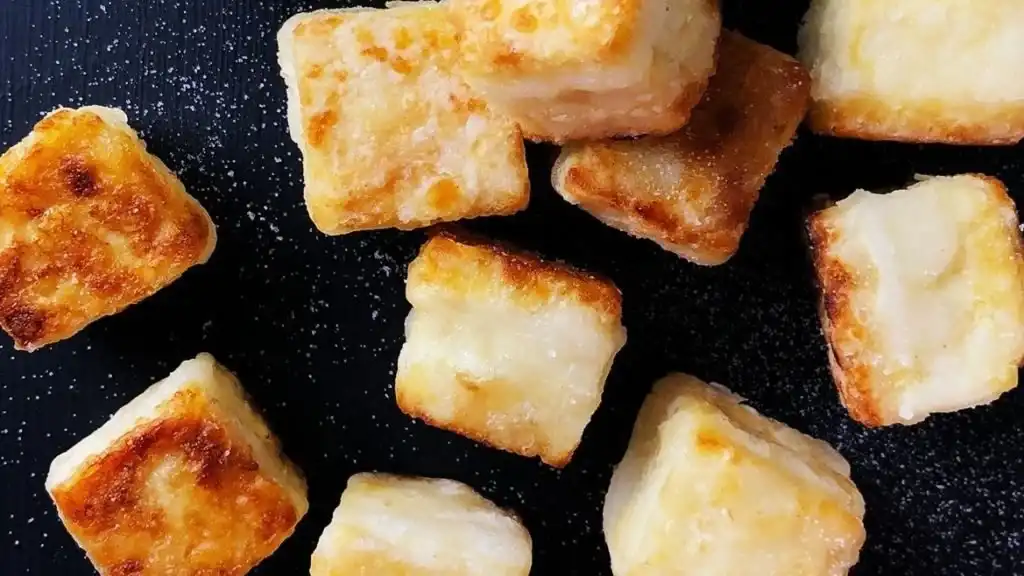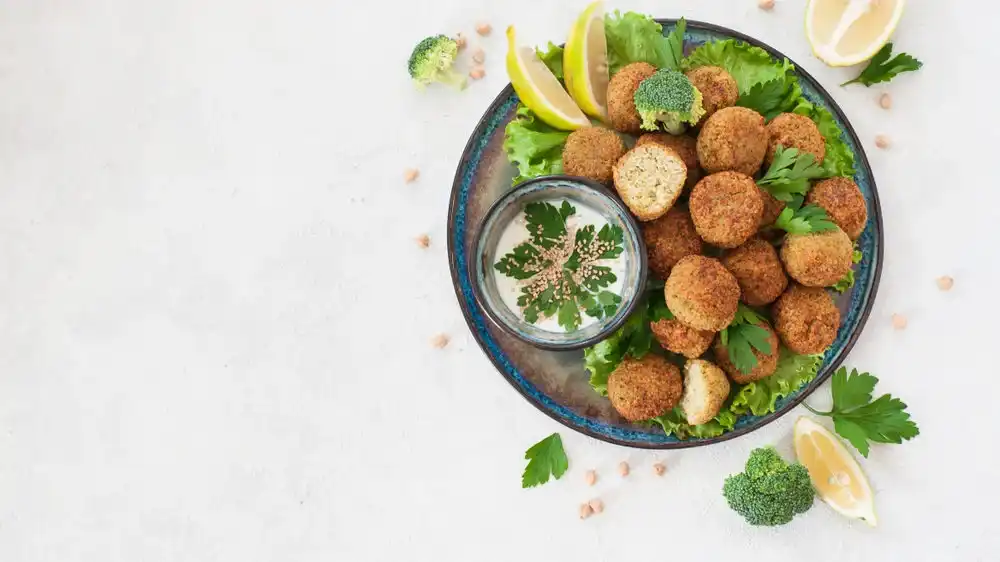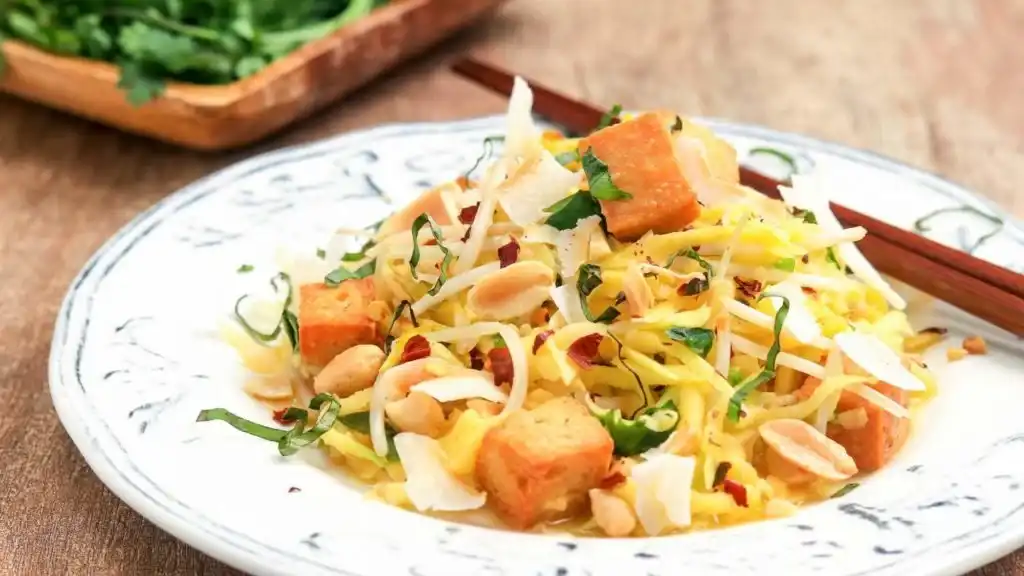Tofu literally means bean curd. The word is taken from the Japanese tōfu and the Chinese dòufǔ (豆腐). Tofu is a type of food with Chinese roots. Soy milk is coagulated, and the curds are pressed into blocks. These white, solid blocks of curds come with varying softness: silken, soft, firm or even extra firm. Tofu generally has minimal flavour and smell, and it can be made into a dish or dessert. That’s how the Cheesy Seafood Tofu came about.
Cheesy Seafood Tofu
One of the popular processed tofu choices is seafood tofu. It is quite easy to produce homemade tofu from scratch. Prawns and fish paste are added to tofu to give sweetness to the bland tofu. As cheese is an all-time favourite, it is then added in as filling to the tofu.
Deep fry the cheese seafood tofu in oil and voila! Deep-fried Cheesy Tofu, crispy on the outside, smooth on the inside with some melting cheese bursting into your mouths! This is a simple dish that can be set on dinner tables, or act as an appetiser and snack.
Nutritional Value of Tofu
Since tofu is made of soy milk, it is high in protein and can be made as a protein substitute for vegans. There is also significant amounts of iron and can be high in calcium or magnesium, depending on the type of coagulants used during manufacturing. It can be filling yet only takes up relatively low calories in a meal.
History of Tofu
Some 2,000 years ago, tofu-making was first recorded during the Han Dynasty in China. Its invention was linked to Prince Liu An of Anhui province. There are not many reliable sources on this information, and throughout Chinese history, many important events or inventions were frequently attributed to prominent figures of that time.
The dish and its production techniques passed on to Japan during the Nara period. It has since then spread to Southeast Asia and is a staple in countries such as Thailand, Korea and Vietnam.
There is a theory that suggested that the production method of the dish was discovered accidentally when a soybean slurry was mixed with unrefined sea salt which may have contained calcium and magnesium salts forming the soybean curds.
Another theory states that ancient Chinese obtained the method from the East Indians or Mongolians. The word tofu is similar to rufu, which means ‘milk curdled’ in Mongolian. It is plausible as there have been no documentation on its production in Chinese history.
Production and Varieties
The production of tofu is similar to those with dairy cheese. The coagulation process is a pivotal step in ensuring curds are produced to form the tofu blocks. Basically, the making includes steps such as cleaning, soaking and grinding of soybeans in water, filtering, boiling, coagulating and pressing of soy curds.
The coagulation process requires coagulants, and there are a few coagulants available: salt coagulants (calcium sulfate, magnesium chloride), acid coagulants (glucono delta-lactone, acetic and citric acid) and enzyme coagulants (papain, proteases).
As time goes by, people started to add flavour to the bland tofu. Hence, instead of trying to make a dish with various seasonings, the seasoning itself is added into the tofu itself. These tofus are called processed tofu.




